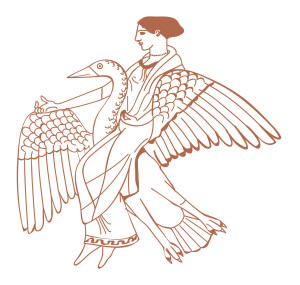
One of the most famous paintings by Botticelli depicts the adult goddess Venus arriving on the shore in a scallop shell. Most historians believe that the work was commissioned by the Medici family, but no actual documentation remains to prove that theory. To see the painting in person, one would have to travel to Florence, Italy, but the trip would be worth it to view a work by an Italian Renaissance painter that has survived more than 500 years. Venus is the Roman goddess of fertility and love. Her Greek counterpart is known as Aphrodite. March 18 is International Goddess of Fertility Day.
Who Is Aphrodite?
As with many Greek and Roman gods and goddesses from mythology, there are a number of different stories about Aphrodite. One tale has her coming up out of the sea foam while another says that she is the daughter of Zeus and Dione. Aphrodite was a beautiful woman who caused many fights among the men who wanted to be her suitor. Zeus married her to Hephaestus, the god of volcanoes, metal, and artists. Aphrodite did not limit her lovers to her husband, and she was associated with Ares, Adonis, Eros and Psyche, and many others.
According to the legends, many of the lesser beings in Greek mythology are attributed to Aphrodite. She was very fertile and gave birth to The Graces (Charites), Thalia, Euphrosyne, and Aglaea. The Erotes, Eros, Anteros, Himeros, and Pothos, are four of her eight children with Ares. Adonis and Aphrodite are the parents of Beroe and Golgos. Strangely, she never had any children with Hephaestus.
Adonia, a festival in honor of Aphrodite and Adonis, is celebrated at the first full moon following the Spring Equinox. This typically falls around the time of Easter. She also has another festival associated with her name in late summer. Worshippers of Aphrodite give devotional offerings such as apples, pomegranates, roses, and cakes made with honey, which are symbols of fertility.
Goddesses of Fertility in Every Culture
Fertility was the lifeblood of every civilization. From Japan to Mexico and every country in between, fertility gods and goddesses were highly prized. Many people are familiar with Isis, the Egyptian goddess of motherhood. In Norse mythology, the goddess was Freyr. Ishtar is the Mesopotamian equivalent. The Catholic religion does not have deities of fertility, but St. Anne and Mary, the Mother of Jesus, are thought to be intercessors for women who wish to get pregnant.
In Anglo-Saxon mythology, Eostre was the goddess of fertility celebrated in the spring with the earth’s renewal. Some historians believe that the name of the Christian celebration of Easter came from Eostre’s name. It could be that the tradition of the Easter Bunny came from the symbols of the hare and the eggs used to honor Eostre.
Celebrating Spring
There is very little data about how Goddess of Fertility Day got started. Practically every culture has some kind of spring celebration to honor the deities associated with birth, love, and prosperity. In less modern times, at the end of winter, people would be concerned about their food stores. The first signs of spring were symbols of sustenance, light, and warmth after the cold and dreary winter.
Goddess of Fertility Day reminds us that spring is ahead. Those wishing to become pregnant should celebrate appropriately. However, it’s not just for those wishing to start a family. It’s a time for people to begin new projects or grow in an area. Take the day to make a decision to start something that you’ve always wanted to do. January may be when people make resolutions, but spring gives life to the changes you want to make. Start fresh as the trees and flowers bring color back to nature.

